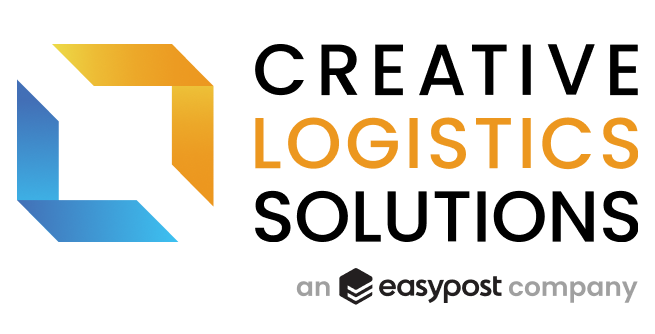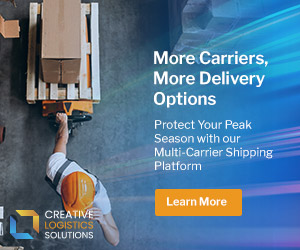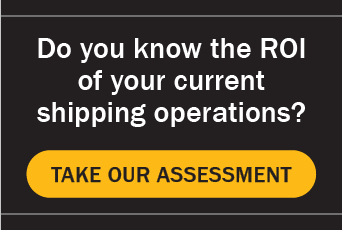A Guide to Better Understanding Ecommerce Fulfillment
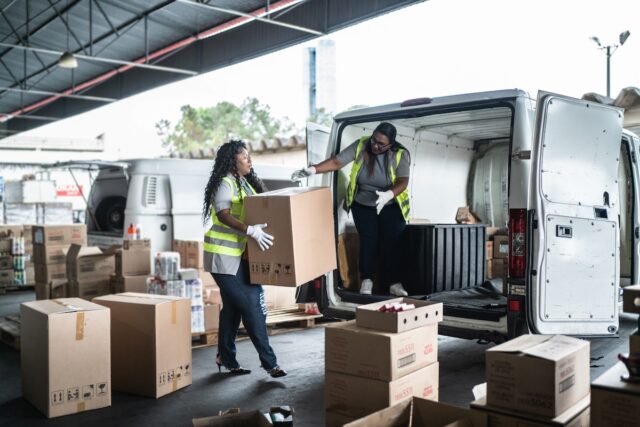
For online shoppers, it’s like magic: they place an order, and a few days later a package materializes on the doorstep. Voila! But behind the scenes, things aren’t so simple—products go through a complex, multi-step journey before reaching their end destination. That journey is known as ecommerce fulfillment.
What is ecommerce fulfillment?
Ecommerce fulfillment is the process of delivering online orders to customers. It includes inventory storage, picking, packing, and shipping. The fulfillment process begins when a customer places an order and ends when they receive their package.
With online purchases making up 58% of consumer spending, it’s in your business’s best interest to create an effective ecommerce fulfillment system. The first step is understanding how it all works.
What are the 4 types of fulfillment?
Each business handles ecommerce fulfillment a little differently depending on their size, resources, and long-term goals. Or, in the words of this logistics report, “What companies need in the ecommerce journey depends on where they are coming from.”
Some organizations opt to handle fulfillment internally, while others rely on external partners like 3PLs. So, which method is right for you? Read on to discover the four types of fulfillment.
1. In-house order fulfillment
If you prefer to have full control over your ecommerce logistics, in-house order fulfillment is the method for you. With this strategy, your business handles the entire fulfillment process internally, from inventory storage to shipping.
This model looks different for every ecommerce business. Very small businesses might store inventory in a garage or spare bedroom, pack boxes by hand, and drive them to the carrier. More established companies will opt to rent warehouse space or run their own facilities.
To effectively scale in-house fulfillment, you’ll need to invest in the infrastructure, technology, and personnel to keep up with an ever-increasing order volume.
2. Third-party fulfillment
Third-party logistics providers, or 3PLs, are outsourced partners that manage the order fulfillment process. They own and operate their own distribution centers across the United States and often internationally. This allows businesses to expand into new regions and reach a wider base of customers.
Businesses send inventory to 3PL distribution centers, where it’s stored until customers place an order. Once someone buys an item online, the order information automatically travels to the 3PL’s system, and workers pick, pack, and ship the order.
Third-party fulfillment is a great option for small businesses looking to grow. Many small and medium-sized organizations outsource their fulfillment, while larger ones often have the resources to keep logistics in-house.
3. Hybrid fulfillment
Not sure whether to choose between third-party or in-house fulfillment? Go with a mixture of both! With a hybrid approach, you can handle some fulfillment yourself while outsourcing some to a 3PL.
Forty-eight percent of B2C (business-to-consumer) and 44% of B2B (business-to-business) companies use a combination of insourcing and outsourcing to fulfill orders.
4. Dropshipping
The most hands-off of the fulfillment types, dropshipping is also one of the most cost-effective, which makes it great for businesses just starting out. It works like this:
- A customer places an order from your online store.
- The information is sent to your third-party supplier.
- The supplier packages and ships the order directly to the customer.
While dropshipping saves money by eliminating the need to hold inventory, it comes with extra fees that can lower your profit margins. You also have less control over the quality of products and the delivery experience.
What makes up the ecommerce fulfillment process?
Order fulfillment consists of many moving pieces, and each part needs to be running smoothly for the entire system to stay efficient. Let’s take a look at some key elements of ecommerce fulfillment.
Order management
Order management refers to everything that happens from the time a customer places an order to when they receive their purchase. It involves all the interactions that take place between the people, software, and partners involved in the order fulfillment process. Using an order management system (OMS), businesses can map each order’s journey from start to finish.
Inventory management
Imagine a customer browsing your site, finding exactly what they’re looking for, and then encountering the dreaded “out of stock” message. Rolling their eyes, they head straight to your competitor’s site to buy a similar product that will arrive when they need it.
When customers find out the products they want aren’t available, they tend to get frustrated. A primary goal of inventory management is to limit this frustration by ordering the right amount of goods to meet consumer demand.
“Inventory [is] probably one of the most important pre-purchase elements of a dynamic supply chain.” — Matt Boland, senior director at Korber Supply Chain
Inventory management is the process of tracking inventory levels, updating product availability, and reordering when stock is low. It also includes forecasting demand, as you don’t want to order too much or too little of an item. Balancing inventory levels allows you to fulfill orders efficiently and get products into the hands of people who want them.
Warehousing
Warehousing refers to businesses storing inventory before it’s sold to consumers. At a certain point, growing businesses transition from storing inventory at home or on-site to renting warehouse space or running their own warehouse.
Distributed inventory is the practice of storing inventory in various locations so it doesn’t have to travel too far to get to customers. If you keep all your inventory in one place, those who live closest will get their packages in record time, but people who live farther away probably won’t be happy with delivery times. Seventeen percent of businesses use two distribution centers, 22% use three, and many use more.
Pick and pack fulfillment
Using the pick and pack fulfillment method, workers at a fulfillment center receive information about an order, including which SKUs (stock-keeping units) need to be picked (or taken out of storage) and where they’re located. The pickers then retrieve the items.
Some advanced distribution centers use robotics to speed up the picking process, while others save time by using technology to optimize the routes pickers take through the warehouse.
Once all the items for an order are gathered, employees choose the correct packaging material and pack the orders.
Kitting and assembly
Sometimes, individual products need to be grouped together in a process called kitting. Kitting could be used in the following situations (and many more):
- Electronic accessories. Before shipping an electronic device, the seller might bundle together the charger, cables, and adapters.
- Subscription box. Subscription box services often use kitting to assemble a curated assortment of products, such as makeup, snacks, or books.
- Home appliance installation. When selling appliances like washing machines, kitting can involve including installation accessories like hoses and brackets.
Kitting can be very time-consuming, but many 3PLs offer this service (usually for an additional fee).
Shipping
Even if you handle fulfillment in-house, it’s unlikely that you transport packages to customers using your own vehicles. When it comes time to ship, you turn to carriers. Some businesses focus on building relationships with individual carriers, while others use shipping software to integrate with many carriers at once. Either way, the basic principle remains the same: you enter information like the customer’s address, package dimensions, and delivery time; print shipping labels; and hand packages off to the carrier.
If you outsource logistics to a third party, they follow a similar process, purchasing shipping software that allows them to optimize delivery routes and find the most cost-effective ecommerce shipping options.
Returns management
Returns management includes receiving and processing returned items. The average number of returns varies by industry, but you should expect to have at least some of your products returned. With a clear policy and defined returns processing system, you’ll keep costs low and customers satisfied.
Ecommerce fulfillment strategies and services
Wouldn’t it be great if ecommerce fulfillment was always straightforward? Unfortunately, that’s not the case. In this section, we’ll cover several kinds of ecommerce fulfillment that require specific strategies.
International order fulfillment
Companies that ship orders internationally need to understand each country’s unique customs procedures, currency conversions, taxes, and more. And the complexities of international order fulfillment don’t stop at laws and regulations; it’s also essential to understand language and cultural differences so you can communicate with customers.
B2B fulfillment
B2B orders are sent from one business to another, rather than to an individual consumer. While similar in some ways to normal ecommerce fulfillment, B2B fulfillment comes with its own challenges. Because you’re dealing with larger order volumes, you need to be able to process orders in bulk and accurately track SKUs.
Startup fulfillment services
Because startups often have a low headcount and few resources, fulfillment can be a challenge. Managing inventory, packing boxes, and shipping orders takes valuable time away from other essential business activities.
Because of this, startups will often turn to 3PLs to handle fulfillment right from the get-go. Third-party logistics providers offer many services a startup might not be able to afford on its own, including 2-day shipping and distributed inventory.
Keep in mind that some 3PLs have order minimums, making them a less-than-ideal choice for startups with low order volume.
Subscription fulfillment
Ecommerce subscriptions revolve around recurring shipments of a certain type of product. Every month, customers automatically receive their gourmet coffee beans, makeup sampler bag, curated clothing collection, or whatever else an ecommerce brand can dream up.
The subscription model has blown up in recent years; one study found that between 2020 and 2021, 12,000 subscription brands grew their customer bases by an average of 31%. But fulfilling subscription orders is no walk in the park. It often requires time-consuming kitting or product personalization, which means that subscription businesses must plan their fulfillment strategy carefully.
What are fulfillment centers?
Fulfillment centers are specialized facilities or warehouses where products are stored, processed, and shipped to customers. They’re designed to manage and fulfill customer orders efficiently, often for ecommerce or direct-to-consumer businesses.
Although the terms fulfillment center, warehouse, and distribution center are often used interchangeably (as in this article), they technically have slightly different meanings.
Warehouses are large buildings used to store materials and products before they’re needed for distribution, manufacturing, or retail purposes.
Distribution centers (DCs) are facilities used to receive, store, and distribute goods and products. They have a central role in the supply chain, serving as hubs where large shipments are received from suppliers, sorted, and sent to retail stores, warehouses, or other DCs.
How to choose an ecommerce fulfillment provider
When researching 3PLs, it can be easy to become overwhelmed by all the available options. How can you know which one will be the best fit for your business? The following questions will help you approach your research with a clear understanding of what your business needs from an ecommerce fulfillment provider.
- What core services do we need?
- Do we need value-adding services like kitting or returns processing?
- Are there industry-specific regulations the 3PL must meet (like FDA compliance for pharmaceuticals)?
- Where are our customers located? Can the 3PL support our distribution needs?
- What is our current order volume? Will it grow in the future? Can the 3PL scale to keep up with our growth?
- What level of technology integration do we need? Can the 3PL’s tech stack integrate with our systems?
- What are our service level expectations in terms of delivery times, accuracy, and customer support?
What are ecommerce fulfillment costs?
As the saying goes, nothing in life is free. No matter which type of fulfillment you choose, you’ll have to pay—either directly or indirectly—for labor, materials, and tools.
In a recent survey, 51% of respondents reported that their fulfillment costs increased in 2022. The report explains, “Cost concerns varied by company size. Small companies were more likely to feel the impact of shipping costs while labor was a bigger concern for large and mid-size companies.”
We’ll break down some of the costs associated with in-house fulfillment and 3PL fulfillment to help you understand which fulfillment method will work best for your budget.
In-house fulfillment costs
If you choose in-house fulfillment, your costs will include storage, labor, software and tools, packaging materials, and shipping.
- Storage. Once your business reaches certain inventory levels, you’ll either need to rent warehouse space or manage your own warehouse. In 2022, renting warehouse space cost an average of $8.84 per square foot.
- Labor. When you keep fulfillment in-house, you’ll need to build (and pay) a team. According to a 2023 survey, the average hourly rate for warehouse workers is $15.78.
- Software and tools. To keep a warehouse running efficiently, it’s essential to have the right software. This can include a warehouse management system, order management system, inventory management system, and shipping software.
- Packaging materials. Boxes, poly mailers, printers and ink, packing tape—you’ll need to factor the cost of these supplies into your monthly expenses.
- Shipping. When you keep fulfillment internal, shipping becomes one of the most significant costs. You can access better rates by optimizing packaging and comparing carrier rates with multicarrier shipping software like EasyPost Enterprise.
3PL fulfillment costs
Every 3PL has a different pricing model: some bundle everything into one fee, while others charge separately for each service you use. But in the end, you’re still paying for the 3PL to handle each phase of order fulfillment. Let’s break down the costs according to ShipBob.
- Receiving inventory. When you send your inventory to the 3PL, they have to unload it and place it in their warehouse. ShipBob charges a flat fee of $35 for the first two hours spent.
- Storage. Storage costs are usually calculated based on the number of shelves, bins, or pallets your products take up in the 3PL’s facilities. Every month, storage could cost around $40 per pallet, $10 per shelf, and $5 per bin.
- Pick and pack. With a pick and pack pricing model, the 3PL charges for each item that’s picked to fulfill an order (about $0.25 per item, after the first four).
- Packaging materials. Some 3PLs charge extra for packaging materials, while others include them in the total cost.
- Shipping. The cost of shipping varies depending on carrier, product dimensions, and weight. Because 3PLs ship high volumes, they can access discounted rates that save you and your customers money.
- Additional fees. You may need to pay more for onboarding, as well as specialized services like returns or kitting.
Ecommerce fulfillment example: How Dollar Shave Club brought shipping back in-house
In 2015, after having outsourced its shipping to a 3PL, Dollar Shave Club decided to bring shipping back in-house. As the number one subscription ecommerce shaving and grooming company in the world, Dollar Shave Club needed a reliable high-volume shipping system. At the suggestion of their warehouse management vendor, HighJump, they decided to partner with EasyPost Enterprise.
Working together, HighJump and EasyPost Enterprise developed an interface that allows Dollar Shave Club to automatically print shipping labels for 12,000 orders in just under 17 minutes. Before the automation, printing labels required multiple manual steps and took significantly longer.
Lori Jackson, director of fulfillment for Dollar Shave Club, describes the solution as extremely adaptable, noting that “the ability to go from processing 10,000 labels to 100,000 labels in a short period of time is huge.”
Hear the rest of Dollar Shave Club’s in-house fulfillment story
EasyPost Enterprise offers ecommerce fulfillment solutions
EasyPost Enterprise multicarrier shipping software is designed to help ecommerce businesses meet supply chain challenges head-on and keep costs low. Our logistics experts can help you develop an in-house logistics solution tailored to your business’s unique needs—get in touch to find out how it works!
